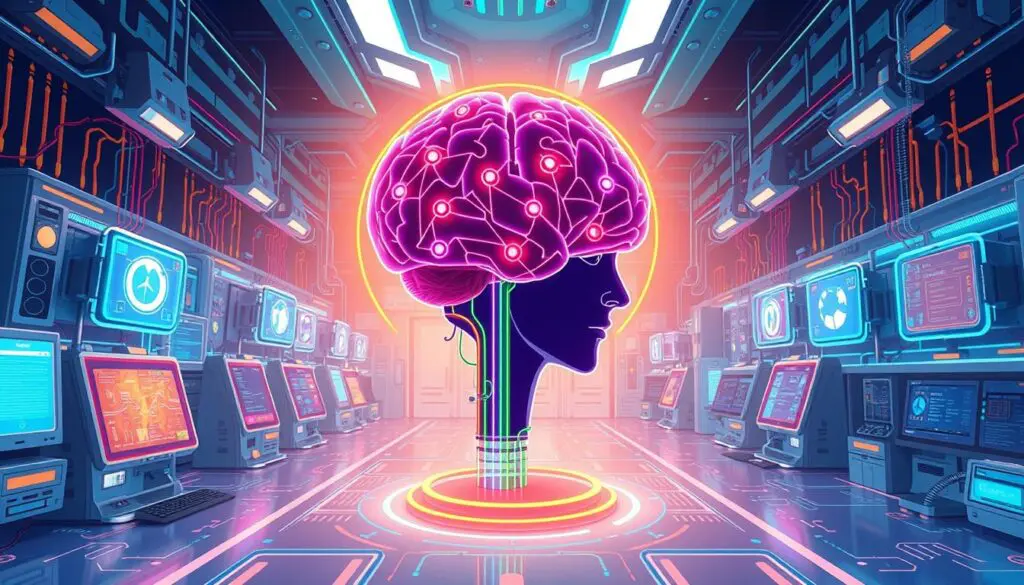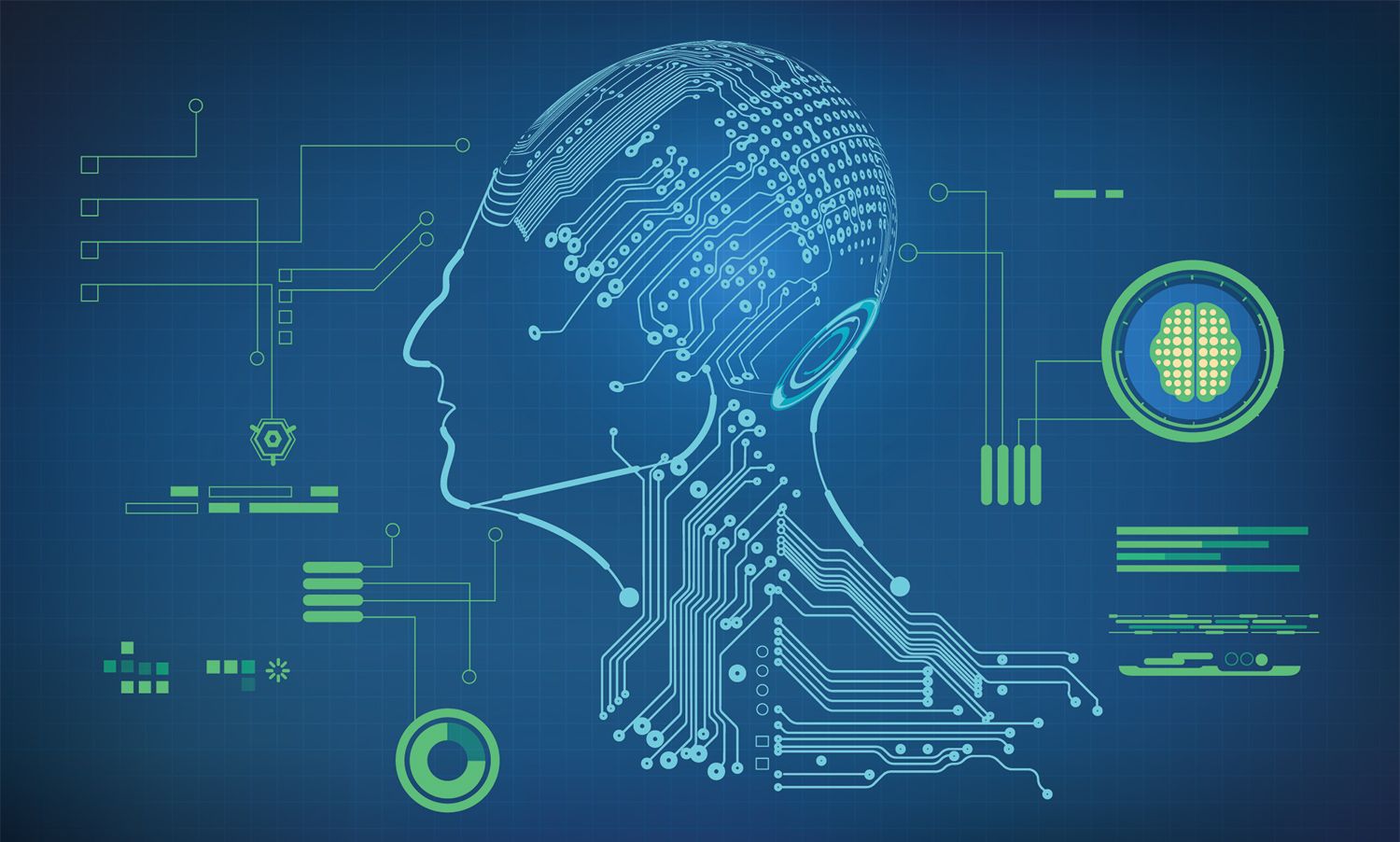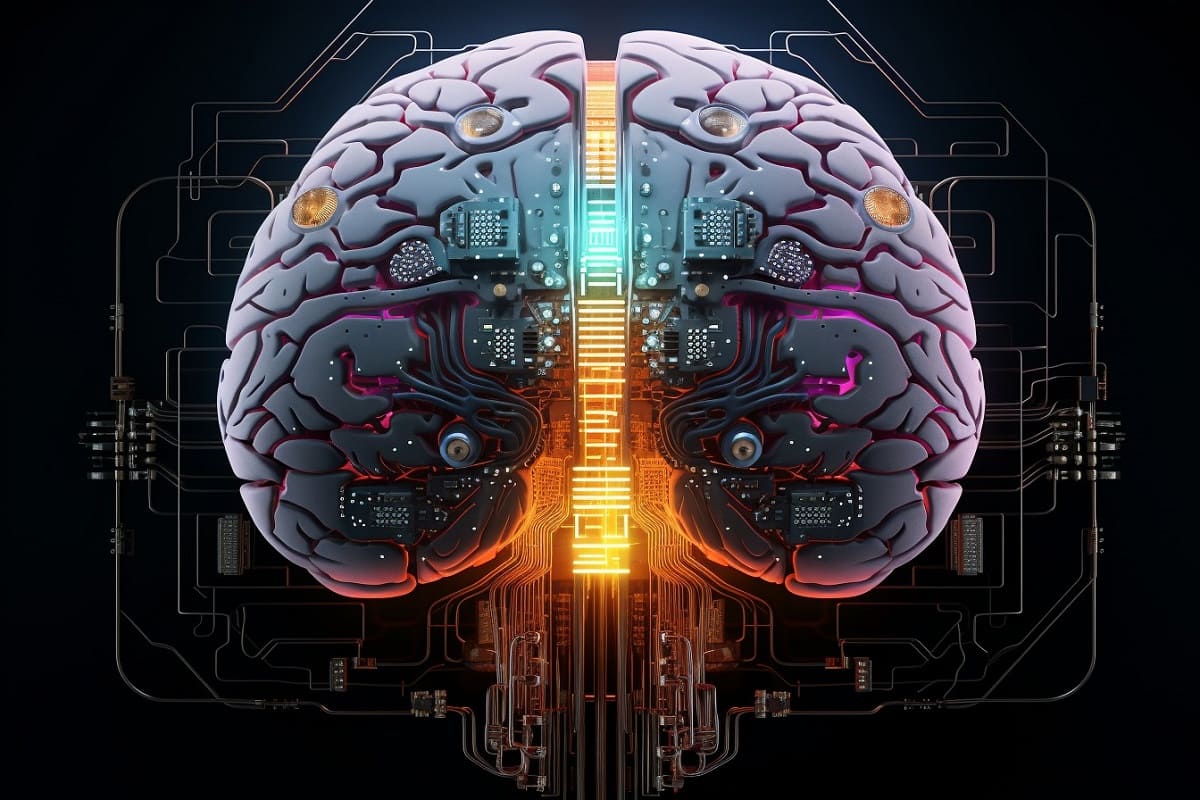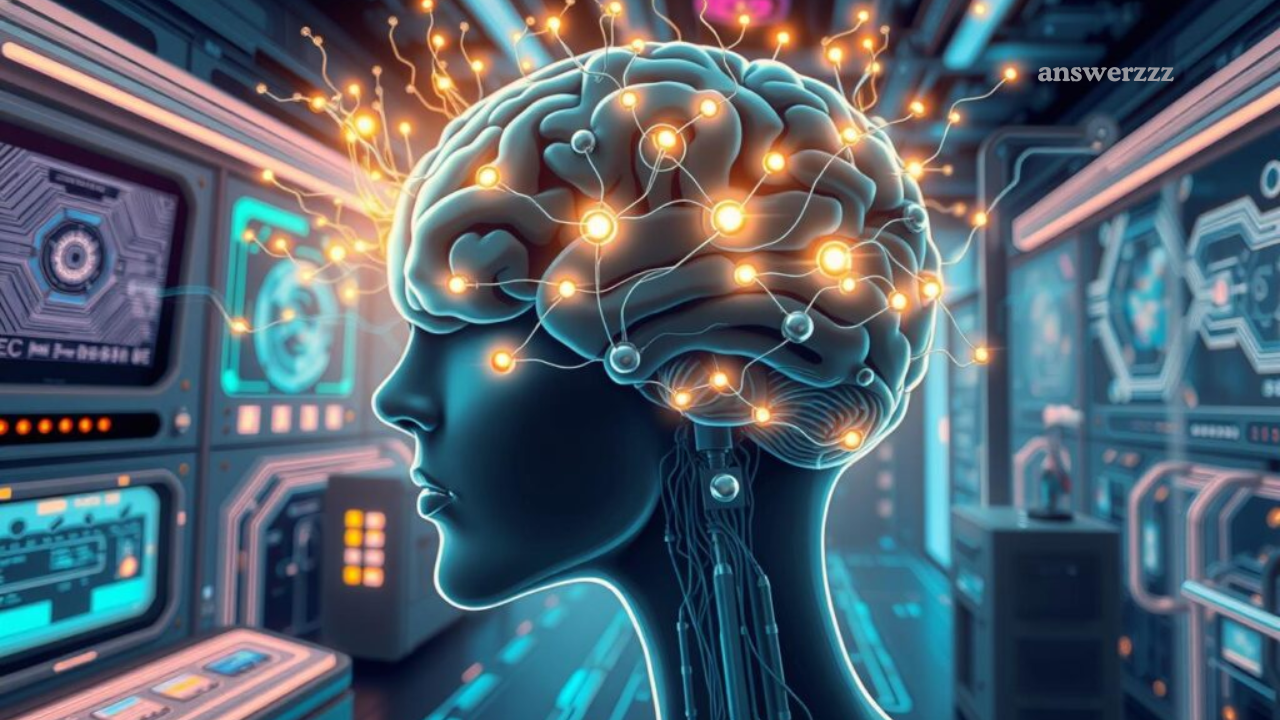The concept of Brain-Computer Interfaces (BCIs) has long been a subject of science fiction, often depicted as the link between humans and machines, with the potential to revolutionize our interaction with technology. Today, however, BCIs are transitioning from the realm of imagination to reality, opening new doors for medical advancements, communication, and even human augmentation. This article will explore how BCIs are bridging the gap between humans and machines, their applications, challenges, and what the future holds for this transformative technology.
What Are Brain-Computer Interfaces?

A Brain-Computer Interface (BCI), also known as a brain-machine interface (BMI), is a direct communication pathway between the human brain and an external device. This technology enables the brain to control machines or computers without the need for traditional physical input methods like a keyboard, mouse, or touch screen. BCIs detect brain signals, interpret them, and convert them into actionable commands for machines.
BCIs can be divided into two broad categories: invasive and non-invasive. Invasive BCIs require surgical implantation of electrodes into the brain, whereas non-invasive BCIs use external devices, such as EEG (electroencephalography) caps, to record brain activity without requiring surgery.
The History of Brain-Computer Interfaces
The idea of connecting the brain to machines has been around for decades. Early experiments in the 1960s and 1970s demonstrated the ability of brain signals to control external devices, including simple robotic arms and cursors on a computer screen. However, the technology was primitive and fraught with limitations, such as low signal resolution and high levels of noise in the data.
It wasn’t until the 1990s and early 2000s that significant progress was made, largely due to advancements in neuroscience, computing, and materials science. Researchers began to develop more sophisticated algorithms capable of decoding brain activity, and non-invasive techniques like EEG became widely used to monitor brain signals. In parallel, the development of more robust and miniaturized electrodes has allowed for the creation of safer, more effective BCIs, some of which are now being tested in real-world scenarios.
How Brain-Computer Interfaces Work
At their core, BCIs rely on the ability to decode electrical signals from the brain. The brain communicates via electrical impulses generated by neurons. These signals are detected and processed by an array of sensors, which can either be implanted directly into the brain (invasive) or placed on the scalp (non-invasive).
- Signal Acquisition: The first step in a BCI system is acquiring brain signals. For non-invasive systems, EEG or functional near-infrared spectroscopy (fNIRS) is used to monitor brain activity. Invasive BCIs, on the other hand, rely on electrodes surgically implanted in the brain to record electrical activity directly from neurons.
- Signal Processing: The raw data collected from the brain is noisy and complex. This data must be filtered, amplified, and processed to isolate the relevant signals. Signal processing algorithms analyze patterns in brain activity to understand the user’s intent, whether it is moving a cursor or controlling a prosthetic limb.
- Decoding and Interpretation: Once the brain signals are processed, they are decoded into meaningful actions. For example, a BCI might translate the brain’s signals into movement commands for a robotic arm or translate thoughts into text on a screen. The accuracy and responsiveness of this decoding process are critical to the performance of BCIs.
- Feedback: Once the BCI interprets the user’s intentions, it sends commands to the external device. The device then provides feedback to the user, either through sensory input (e.g., visual or tactile feedback) or by performing the intended action. This feedback loop is crucial for training and improving the user’s control over the system.
Applications of Brain-Computer Interfaces

The applications of BCIs are vast and diverse, spanning medical, industrial, and entertainment fields. Here are some key areas where BCIs are making an impact:
1. Medical and Healthcare Applications
The most significant promise of BCIs lies in their ability to restore lost function for individuals with disabilities or neurological disorders. Some of the most promising medical applications include:
a) Prosthetics Control:
BCIs enable individuals with amputations or paralysis to control prosthetic limbs using only their brain signals. In combination with advanced robotic prosthetics, BCIs provide a seamless interface for people to regain lost abilities. For example, a person with a paralyzed hand can use a BCI to control a robotic hand and perform tasks like gripping or typing.
b) Neurorehabilitation:
BCIs are being used to help individuals with brain injuries or strokes regain lost motor skills. By using brain activity patterns to retrain the brain, BCIs offer a way to enhance rehabilitation efforts. Systems like exoskeletons and robotic aids can be powered by BCIs to promote physical recovery by encouraging brain reorganization.
c) Assistive Communication:
For individuals with severe neurological impairments, such as those suffering from ALS (amyotrophic lateral sclerosis) or locked-in syndrome, BCIs can offer a way to communicate. Using brain signals, these individuals can control devices that allow them to type messages, communicate with others, or interact with their environment.
2. Neuroscience Research
BCIs are also valuable tools in neuroscience research, helping scientists understand how the brain works in real-time. By recording and analyzing brain activity, BCIs allow researchers to explore brain functions, neural networks, and the effects of diseases like Alzheimer’s or Parkinson’s. This research also paves the way for better treatments and therapies for neurological disorders.
3. Entertainment and Gaming
BCIs have found applications in the gaming and entertainment industries, offering more immersive and intuitive ways for users to interact with digital content. Through BCI-controlled video games, players can use their thoughts to control avatars, interact with game environments, or manipulate virtual objects. This enhances the level of engagement and provides an exciting glimpse into the future of gaming.
4. Military and Defense
In the defence sector, BCIs are being explored for a range of applications, including enhancing soldier performance and creating advanced systems for controlling drones or robotic vehicles. Brain signals could be used to enhance focus, improve reaction times, or even create advanced communication systems that allow soldiers to share information without speaking.
5. Human Augmentation
Another potential application of BCIs lies in human augmentation. The idea of enhancing human capabilities by directly interfacing the brain with machines has the potential to transform human performance in fields like sports, education, and work. For instance, BCIs could be used to boost cognitive functions, improve memory, or enable faster learning.
Challenges and Limitations of Brain-Computer Interfaces
Space Exploration Technologies to Watch: The New Frontier of 2026
Despite the exciting potential of BCIs, several challenges and limitations must be addressed before the technology can become widespread and accessible.
1. Signal Accuracy and Reliability
One of the most significant challenges facing BCIs is ensuring the accuracy and reliability of the signals. Brain signals are highly complex and can be affected by various factors, such as fatigue, mental state, or external noise. Invasive BCIs have more direct access to brain signals, but they carry risks like infection and potential damage to brain tissue. Non-invasive methods, while safer, often produce lower-quality signals and are more prone to error.
2. Ethical and Privacy Concerns
The ability to read and interpret brain signals raises numerous ethical questions. For instance, if a BCI can decode thoughts, who controls access to this information? Issues surrounding privacy, consent, and potential misuse of BCIs need to be carefully considered as the technology evolves. Additionally, there are concerns about the potential for BCIs to be used for surveillance or manipulation.
3. Invasiveness and Safety
While invasive BCIs offer more precise control, the surgical implantation of electrodes into the brain carries significant risks. Infections, immune responses, and long-term tissue damage are concerns that need to be addressed. For non-invasive systems, signal quality is often compromised, making them less effective for precise control.
4. Cost and Accessibility
The high cost of developing and deploying BCI technologies presents a barrier to widespread adoption. The materials, research, and development required for high-performance systems make BCIs expensive, limiting their availability to elite medical institutions, research labs, and select industries. For BCIs to reach broader applications, costs must come down, and the technology must become more accessible.
5. Human-Machine Integration
While BCIs are promising, the integration of human neural patterns with machine systems presents unique challenges. Ensuring that the brain can effectively communicate with machines in a way that feels natural and intuitive is no easy feat. There is also the challenge of developing user-friendly interfaces and training individuals to use these systems effectively.
The Future of Brain-Computer Interfaces

The future of BCIs holds immense promise. As technology advances, we will likely see:
- Improved Signal Processing: Better algorithms and machine learning models will allow for more accurate and reliable decoding of brain signals.
- Miniaturization: BCIs will become more compact and wearable, making them less intrusive and easier to integrate into daily life.
- Wireless Systems: Wireless BCIs will eliminate the need for physical connections, making the systems more comfortable and versatile.
- Brain Augmentation: BCIs could enhance cognitive abilities, memory, and even emotional control, revolutionizing industries from education to mental health care.
- Neural Prosthetics: More advanced prosthetics could be controlled directly by the brain, enabling seamless interaction between the mind and the artificial limbs.
Brain-computer interfaces are rapidly advancing, providing a bridge between humans and machines that promises to reshape how we interact with technology. Whether for restoring lost abilities, enhancing cognitive function, or enabling new forms of human-machine collaboration, BCIs hold the potential to revolutionize medicine, industry, entertainment, and beyond. Despite the challenges, the future of BCIs is bright, and as we continue to develop and refine these systems, we may find ourselves in a world where the boundaries between the human brain and machines are increasingly blurred.
Metaverse 2.0: New Features and Trends Shaping Virtual Experiences in 2026



